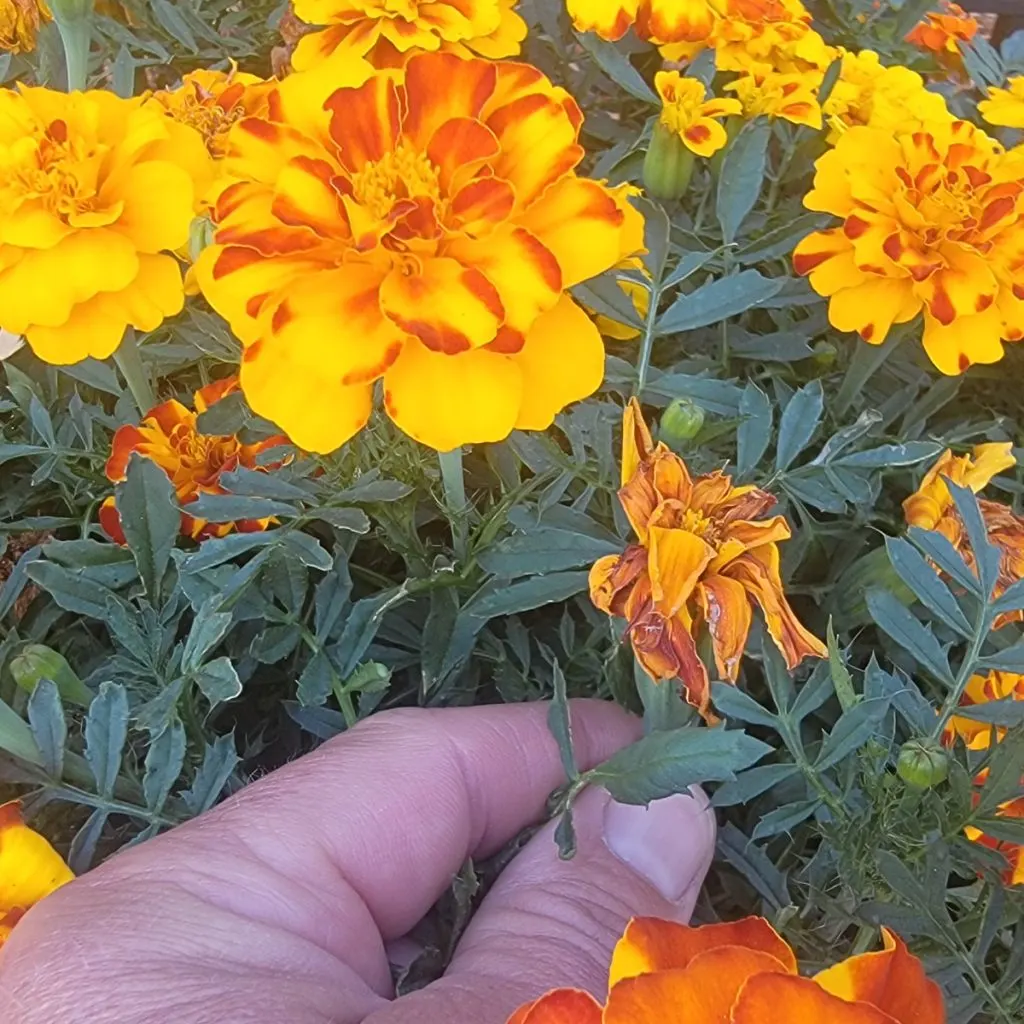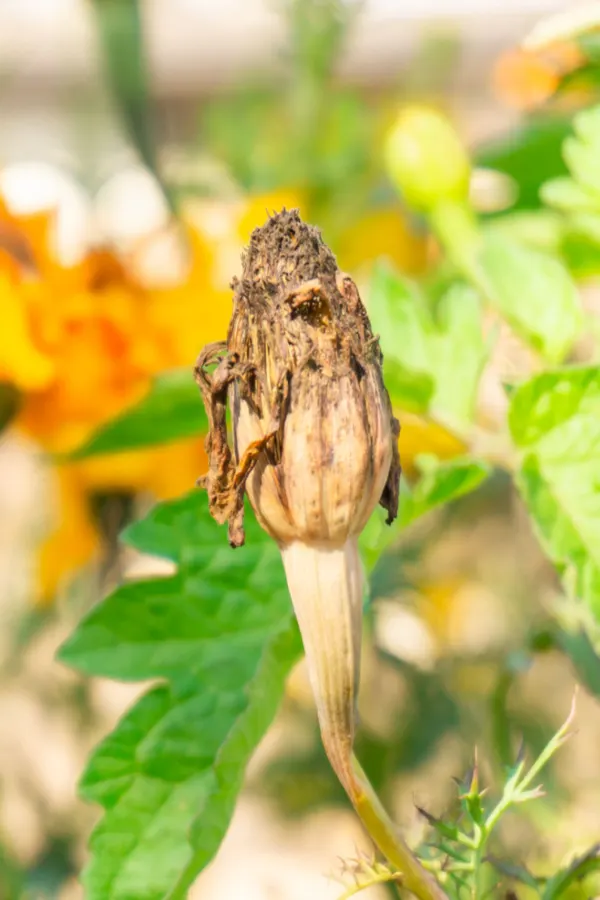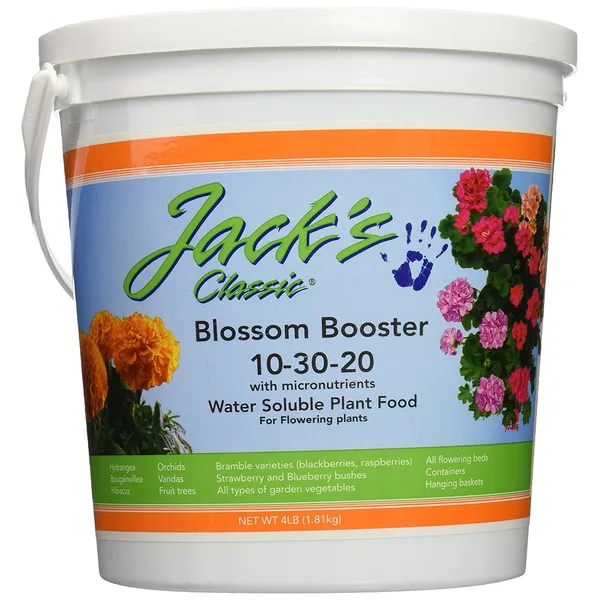Did you know that one of the best ways to keep your marigolds blooming big and bright all summer long is to simply deadhead them on a regular basis?
Deadheading is the process of removing fading blooms from a plant. And can it ever make a huge difference in not only the overall health of your marigolds – but in just how many flowers your plants can produce over the course of a growing season!
Marigolds are one of the biggest flowering annuals of all. Once they begin to grow and set their blooms in late spring, their brightly colored flowers can quickly all but cover their bright green canopy of foliage. But to keep marigolds pushing out blooms for the remainder of the summer and fall, removing those blooms as they begin to die is a must!

How To Deadhead Marigolds To Get More Blooms
The Importance Of Deadheading Marigolds
So why is deadheading so important to marigolds? It actually serves three major purposes for the well being of the plant.
The first is that by removing the old flower, you instantly stop the loss of energy the plant is spending on the fading bloom. Unfortunately, even when a flower begins to fade past its prime, the plant will continue to try to heal it.
Almost all annuals and many perennial plants do this. It is simply a built in response to try to heal any damaged limbs, leaves or in this case, blooms. The longer a bloom remains, the more power the plant wastes on it. And the only way to stop that energy loss is to remove the fading flower.
Don’t Let Marigolds Form Seeds In The Summer
Secondly, if you allow the old flower to remain too long, it will then start to form a seed head. At the end of the season when plants are winding down, this is a great practice for saving seeds for the following year. Especially when it comes to saving on the garden budget! See: How To Save Marigold Seeds With Ease
But when the plants are growing strong in late spring and summer, allowing your plants to form seeds at this point is a big no-no. Why? Because it takes a tremendous amount of energy from the plant. Energy that could instead be going toward producing new buds and flowers.

Last but not least, another important reason for clearing old blooms from the plant is that it makes way for more flowers to form. Once removed, the plant turns its energy toward creating new buds. And that, of course, means more blooms to soon follow.
How To Best Remove Old Blooms – How To Deadhead Marigolds
The good news is that deadheading marigolds couldn’t be easier. It can be done in mere minutes and without the need for any special tools. In fact, all you need are your hands and you are in business!
To remove the blooms, simply pinch the stem right behind the flower and seed head. By pinching the stem it will snap the old bloom head off quickly. And by doing this behind the bloom and seed head – you stop the plant instantly from sending energy to the old flower.
As for how often you should deadhead, the more the better! By removing the old blooms regularly, you keep the plants looking fresh and alive. But more importantly, you keep it producing new buds on a continual basis.
Many gardeners like to take a few minutes every few days to clean up their plants. Even deadheading once a week will do wonders for keeping your marigolds in tip top shape. But the key is to remove those old blooms on a regular basis!
One final note on deadheading – although the blooms are not sharp in any way, gloves are always a good idea to use when removing old marigold blooms. The strong scent of marigold foliage easily transfers to your skin – and the colorful flowers can stain hands as well. Gloves do a great job of protecting you from both!

A Few Extra Tips For More Marigold Blooms
Beyond taking the time to regularly deadhead your marigolds, there are a couple of other major factors that can help them to continue blooming big. At the top of that list is taking the time to fertilize your marigolds regularly!
To produce all of those blooms, the plant needs energy. And even though you are helping plants to save nutrients by deadheading, marigolds can still quickly deplete the soil of the power they need to produce more blooms.
Feed Your Marigolds What They Need Most
When fertilizing marigolds, the secret to success is to feed them a liquid fertilizer high in phosphorous and potassium. For marigolds, these two nutrients drive bud and bloom production in a big way. And by feeding them a liquid fertilizer, the plant is able to absorb the nutrients fast – both through the soil and its foliage.
Select a fertilizer that is designed for blooming. These will usually have double to triple the amount of phosphorous and potassium levels versus nitrogen. Affiliate Product Link: Jack’s Classic 10-30-20 Blossom Booster Water-Soluble Fertilizer

It’s better to feed your marigolds more often but with a lighter dose when fertilizing. This allows a constant flow of nutrients without overpowering the plant. Unfortunately, when marigolds get too much energy at once, they actually use it to simply grow larger. All at the expense of setting more blooms.
For best results, feed your plants every seven to ten days, diluting the recommended dosage by one-half.
Although marigolds are fairly hardy and drought tolerant, water is still important as well. Especially when it comes to blooming. Make sure your plants are getting around one inch of rainfall or hand watering weekly.
Here is to taking the time to deadhead your marigolds this year – and to more bigger and better blooms than ever!
This Is My Garden
Follow Our Facebook Page For Great Gardening Tips And Advice! This Is My Garden Facebook Page
This Is My Garden is a garden website created by gardeners, for gardeners. Jim and Mary Competti have been writing gardening, DIY and recipe articles and books and speaking for over 15 years from their 46 acre Ohio farm. They publish three articles every week, 52 weeks a year. Sign up today to follow via email, or follow along!
